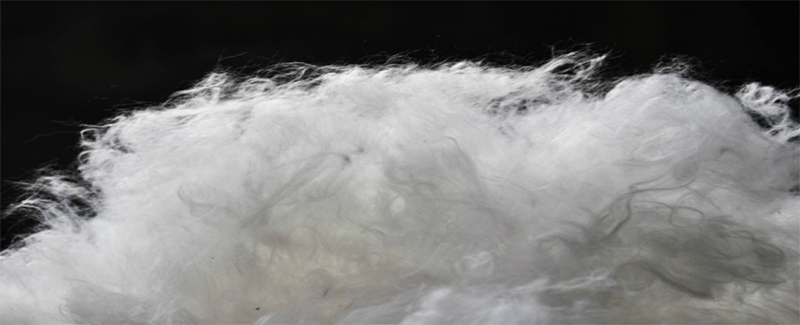With the large-scale development of chemical fibers, there are more and more varieties of fibers. In addition to general fibers, many new varieties such as special fibers, composite fibers, and modified fibers have appeared in chemical fibers. In order to facilitate production management and product analysis, scientific identification of textile fibers is required.
Fiber identification includes identification of morphological characteristics and identification of physical and chemical properties. Microscopic observation is commonly used to identify morphological features.
There are many methods to identify physical and chemical properties, such as combustion method, dissolution method, reagent coloring method, melting point method, specific gravity method, birefringence method, X-ray diffraction method and infrared absorption spectroscopy method, etc.

1.Microscope observation method
Using a microscope to observe the longitudinal and cross-sectional morphology of fibers is the basic method to identify various textile fibers, and is often used to identify fiber categories. Natural fibers each have a special shape that can be correctly identified under a microscope. For example, cotton fibers are flat in the longitudinal direction, with a natural twist, a waist-round cross-section, and a central cavity. The wool is curled longitudinally, has scales on the surface, and is round or oval in cross-section. Some wools have pith in the middle. The jute has horizontal knots and vertical stripes in the longitudinal direction, the cross section is polygonal, and the middle cavity is large.
2.Combustion method
One of the common methods to identify natural fibers. Due to the difference in the chemical composition of the fibers, the combustion characteristics are also different. Cellulose fibers and protein fibers can be distinguished according to the ease of burning the fibers, whether they are thermoplastic, the odor produced during burning, and the characteristics of the ash after burning.

Cellulose fibers such as cotton, hemp, and viscose burn quickly when they come into contact with the flame, and continue to burn after leaving the flame, with the smell of burning paper, leaving a small amount of soft gray ash after burning; protein fibers such as wool and silk burn slowly when they come into contact with the flame, and leave the flame After that, it continued to burn slowly, with the smell of burning feathers, leaving black crunchy ashes after burning.
| fiber type | close to the flame | in flames | leave the flame | burning smell | Residue form |
| Tencel fiber | No melting and no shrinkage | burn quickly | keep burning | burnt paper |
grey black ashes
|
Modal fiber
|
No melting and no shrinkage | burn quickly | keep burning | burnt paper | grey black ashes |
| bamboo fiber | No melting and no shrinkage | burn quickly | keep burning | burnt paper | grey black ashes |
| Viscose fiber | No melting and no shrinkage | burn quickly | keep burning | burnt paper | a small amount of off-white ashes |
| polyester fiber | shrink melt | First melt and then burn, there is solution dripping | can prolong the burning | special aroma | Glassy dark brown hard ball |
3.Dissolution method
Fibers are distinguished according to the solubility of various textile fibers in different chemical agents. One solvent can often dissolve a variety of fibers, so when using the dissolution method to identify fibers, it is necessary to continuously perform different solvent dissolution tests to confirm the type of fibers identified. Dissolution method When identifying the mixed components of blended products, one solvent can be used to dissolve the fibers of one component, and then another solvent can be used to dissolve the fibers of the other component. This method can also be used to analyze the composition and content of various fibers in blended products. When the concentration and temperature of the solvent are different, the solubility of the fiber is different.
The fiber to be identified can be put into a test tube, injected with a certain solvent, stirred with a glass rod, and the dissolution of the fiber can be observed. If the amount of fibers is very small, the sample can also be placed in a concave glass slide with a concave surface, dripped with solvent, covered with a glass slide, and observed directly under the microscope. When using the dissolving method to identify fibers, the concentration of the solvent and the heating temperature should be strictly controlled, and attention should be paid to the dissolving speed of the fibers. The use of the dissolution method requires an accurate understanding of various fiber chemical properties, and the inspection procedures are complex.
There are many identification methods for textile fibers. In practice, a single method cannot be used, but several methods are needed for comprehensive analysis and research. The procedure of systematic identification of fibers is to scientifically combine several identification methods.
Post time: Oct-06-2022
